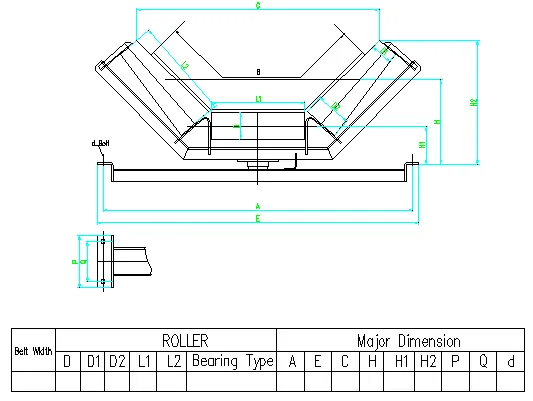 Afrikaans
Afrikaans  Albanian
Albanian  Amharic
Amharic  Arabic
Arabic  Armenian
Armenian  Azerbaijani
Azerbaijani  Basque
Basque  Belarusian
Belarusian  Bengali
Bengali  Bosnian
Bosnian  Bulgarian
Bulgarian  Catalan
Catalan  Cebuano
Cebuano  Corsican
Corsican  Croatian
Croatian  Czech
Czech  Danish
Danish  Dutch
Dutch  English
English  Esperanto
Esperanto  Estonian
Estonian  Finnish
Finnish  French
French  Frisian
Frisian  Galician
Galician  Georgian
Georgian  German
German  Greek
Greek  Gujarati
Gujarati  Haitian Creole
Haitian Creole  hausa
hausa  hawaiian
hawaiian  Hebrew
Hebrew  Hindi
Hindi  Miao
Miao  Hungarian
Hungarian  Icelandic
Icelandic  igbo
igbo  Indonesian
Indonesian  irish
irish  Italian
Italian  Japanese
Japanese  Javanese
Javanese  Kannada
Kannada  kazakh
kazakh  Khmer
Khmer  Rwandese
Rwandese  Korean
Korean  Kurdish
Kurdish  Kyrgyz
Kyrgyz  Lao
Lao  Latin
Latin  Latvian
Latvian  Lithuanian
Lithuanian  Luxembourgish
Luxembourgish  Macedonian
Macedonian  Malgashi
Malgashi  Malay
Malay  Malayalam
Malayalam  Maltese
Maltese  Maori
Maori  Marathi
Marathi  Mongolian
Mongolian  Myanmar
Myanmar  Nepali
Nepali  Norwegian
Norwegian  Norwegian
Norwegian  Occitan
Occitan  Pashto
Pashto  Persian
Persian  Polish
Polish  Portuguese
Portuguese  Punjabi
Punjabi  Romanian
Romanian  Russian
Russian  Samoan
Samoan  Scottish Gaelic
Scottish Gaelic  Serbian
Serbian  Sesotho
Sesotho  Shona
Shona  Sindhi
Sindhi  Sinhala
Sinhala  Slovak
Slovak  Slovenian
Slovenian  Somali
Somali  Spanish
Spanish  Sundanese
Sundanese  Swahili
Swahili  Swedish
Swedish  Tagalog
Tagalog  Tajik
Tajik  Tamil
Tamil  Tatar
Tatar  Telugu
Telugu  Thai
Thai  Turkish
Turkish  Turkmen
Turkmen  Ukrainian
Ukrainian  Urdu
Urdu  Uighur
Uighur  Uzbek
Uzbek  Vietnamese
Vietnamese  Welsh
Welsh  Bantu
Bantu  Yiddish
Yiddish  Yoruba
Yoruba  Zulu
Zulu Improving Performance of Accessory Drive Belt Tensioner and Pulley Systems
Understanding Accessory Drive Belt Tensioner Pulley Importance and Functionality
The accessory drive belt tensioner pulley plays a critical role in the functioning of a vehicle's engine. This component is part of the accessory drive belt system, which is responsible for driving various engine accessories such as the alternator, power steering pump, water pump, and air conditioning compressor. A well-functioning tensioner pulley is essential for the smooth operation of these components, ensuring that the engine runs efficiently and reliably.
What is an Accessory Drive Belt Tensioner Pulley?
At its core, the accessory drive belt tensioner pulley serves to maintain the proper tension in the belt that connects the engine to its accessories. The engine generates a significant amount of vibration and oscillation while operating. If the tension of the belt fluctuates too much, it can lead to slippage, premature wear, or even catastrophic failure of the belt itself. The tensioner pulley adjusts and keeps the belt snug, allowing for optimal performance.
Typically, the tensioner pulley is spring-loaded, which enables it to automatically adjust to variations in belt tension. It compensates for wear over time, ensuring that the belt remains tight enough to engage properly without being overly stressed. This balance is vital to prevent excess wear on both the belt and the accessories it powers.
Signs of a Failing Tensioner Pulley
Like any automotive component, the accessory drive belt tensioner pulley can wear out over time. Certain signs indicate that it may be failing
accessory drive belt tensioner pulley

2. Belt Wear Visual inspection of the belt can reveal signs of wear or damage. If the belt appears frayed, cracked, or has uneven wear, the tensioner pulley might be the culprit.
3. Engine Warning Lights Some modern vehicles are equipped with sensors that monitor the performance of the accessory belt system. If there’s an issue, a warning light may illuminate on the dashboard.
4. Vibration Excessive vibration from the engine compartment can indicate a failing tensioner pulley. This is often due to improper alignment or insufficient tension.
Importance of Regular Maintenance
To ensure the longevity and functionality of the accessory drive belt tensioner pulley, regular maintenance is crucial. This includes inspecting the accessory drive belts for wear and tear, checking the tension of the belt, and ensuring that the tensioner pulley moves freely without obstruction. If any issues are detected, it’s advisable to address them promptly to avoid further complications.
Conclusion
The accessory drive belt tensioner pulley is an integral component of the engine's accessory drive system. It ensures that the drive belt maintains the correct amount of tension, which is vital for the operation of various engine accessories. Recognizing the signs of a failing tensioner pulley and maintaining the accessory drive system can prevent potential engine issues and keep your vehicle running smoothly. Regular check-ups, along with timely replacement of worn parts, will not only extend the life of the tensioner pulley but also contribute to the overall health and performance of your vehicle. Remember, a proactive approach to vehicle maintenance is always more cost-effective than dealing with the consequences of a breakdown.
-
Revolutionizing Conveyor Reliability with Advanced Rubber Lagging PulleysNewsJul.22,2025
-
Powering Precision and Durability with Expert Manufacturers of Conveyor ComponentsNewsJul.22,2025
-
Optimizing Conveyor Systems with Advanced Conveyor AccessoriesNewsJul.22,2025
-
Maximize Conveyor Efficiency with Quality Conveyor Idler PulleysNewsJul.22,2025
-
Future-Proof Your Conveyor System with High-Performance Polyurethane RollerNewsJul.22,2025
-
Driving Efficiency Forward with Quality Idlers and RollersNewsJul.22,2025





























